Turkey 2011
Bursa
I. suaveolens
I. attica
Van
I. paradoxa f. choschab
I. barnumiae subsp. barnumiae
I. barnumiae f. urmiensis
I. iberica subsp. lycotis
I. sari
Erzurum
I. nezahatiae
We may also encounter other bulbous species from subgenus Scorpiris in flower or just past flower. If we have time we will travel west from Van to look for I. masia and north from Ezurum to look for I. sibirica. It is unlikely that I. sibirica will be in flower at this time.
Merhaba from Bursa
After taking a ferry and bus from Istanbul to Bursa, we drove south toward Uşak. We spent several days in the foothills of Uludağ (which means sublime mountain and is Mount Olympus in mythology) and Murat Dagi. We were looking for I. attica and I. purpureobracteata but were surprised to find I. suaveolens at two sites instead. We stayed in several small towns in the region. In Bigadiç, the local doctor came to the hotel because he heard English speakers were in town. The hotel clerk made coffee on a small propane burner and we provided rolls. This sharing of food was repeated later with a man who was felling trees when the mountain road we were traveling on became impassable. Having only found one species south of Bursa, we moved southeast of Bursa in the area around Söğüt to continue our search. In this region we found I. purpureobracteata at a surprisingly low elevation growing in cracks on large rock slabs. In the evening before we had to leave this region, we found I. attica along a rural road. It was in a small, undisturbed site with oak, rhododendrons, orchids and tulips. Unfortunately I. attica was past flowering and it was nearly dark preventing me from obtaining good photographs.

Women in Fields
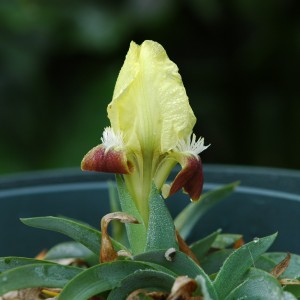
I. attica
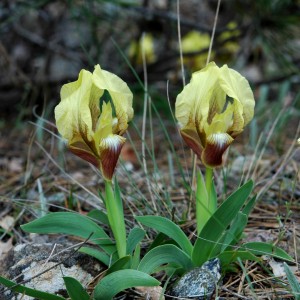
I. suaveolens
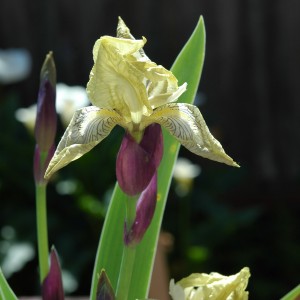
I. purpureobracteata
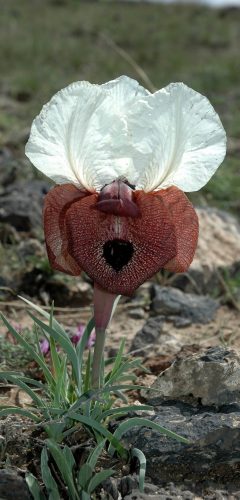
I. iberica subsp. elegantissima
Merhaba from Van
We flew to Erzurum and drove to Van with great anticipation because Van is a new area for us and I was anxious to find the unusual I. paradoxa. We stayed in small towns and found several populations of I. iberica subsp. elegantissima and one population of I. barnumiae subsp. barunumiae on our way to Van. This is a Kurdish area and we sometimes had trouble finding accommodations because of unrest in the area. We also saw I. caucasica subsp. turcica and I. persica.
I thought Van would be provincial but it is quite modern. We found several populations of I. paradoxa f. choscab, which is named for the nearby castle and village. In hilly areas sheep and their herders were common, nomadic groups occasionally seen, and a few times women and children were seen picking içgun or wild rhubarb (Rheum ribes). It is eaten as a cooked vegetable and used as a medicine in eastern Turkey.
We also drove toward Hakkari (and the Iranian border) because the yellow-flowered I. barnumae f. uremiensis has been reported from here. Near the border we would have the car searched and were checked in and out but were surprised at how much traffic crossed the border. We searched along main and side roads without success but did find I. aucheri and I. iberica subsp. lycotis, an Iris that is more common in Armenia. It was quite a find and a complete surprise. I had seen reports that it occurred in the area but nothing specific.
We were quite pleased with our time around Van and decided we had six days to travel west to look for I. masia. We had seen this species previously in SW Turkey. This was quite an adventure as we became lost in the mountains on the Iranian border, were detained by the military, and did not find I. masia. But we did see I. gatesii scattered across a hillside near Siirt.
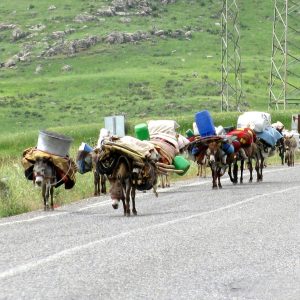
Nomads

I. iberica subsp. lycotis
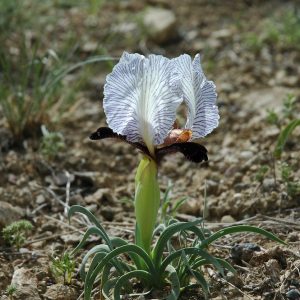
I. paradoxa
Merhaba from Ezurum
We have been in Ezurum previously and are quite comfortable in this city. Our goal was to travel further NE than we had been before to see I. nezahatiae. We were driving along a rocky scree slope on the way to the I. nezahatiae area when I saw Iris leaves and flowers that were mostly past. We stopped to investigate. To our surprise a domas (small bus) also stopped and let out a man. The man had a basket of strawberries and gave us each a handful. We walked across the road with him and saw his small village along the river. There was a path to the village and we waved him along his way. There is a proposed dam project in this canyon and we suspect that this village will be inundated. After determining that this was I. furcata we continued on into a beautiful region with a rushing river, narrow canyon walls and waterfalls. Homes are perched precariously on the cliffs and there are signs advertising pensions for tourists. We found I. nezahatia on several rocky slopes in the canyon but it was finished flowering. After searching around for several hours we returned to Erzurum stopping to photograph I. taochia at a site we have visited in previous years. The next day we searched I. sibirica sites but could not find it. We are quite early for this species but we where we did find a subgenus Scorpiris species which is probably I. caucasica and also I. spuria subsp. musulmanica (which had buds but not yet flowers).
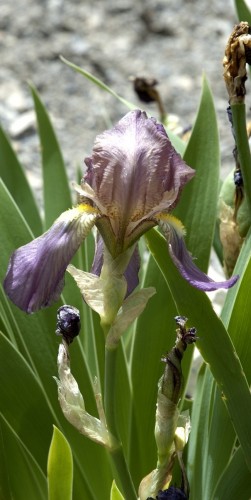
I. furcata
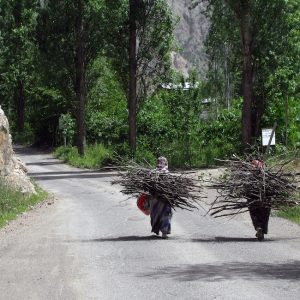
Women carrying sticks near Neza
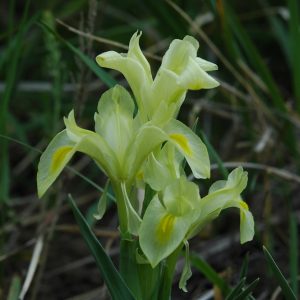
I. caucasica
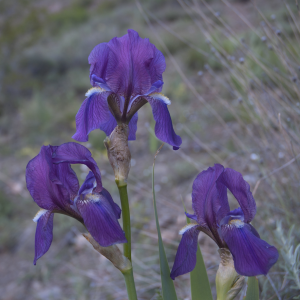
I. taochia
This was our final day as we had a flight to Istanbul in the morning. We are leaving having found species we were searching for except I. barnumiae f. urmiensis, a mostly Iranian species, and I. sari, which we have seen in SE Turkey. We did not find our secondary goals (I. sibirica and I. masia) but did find I. gatesii and I. spuria subsp. musulmanica, and several subgenus Scopiris species that we did not expect to see. It was particularly great to see I. paradoxa and the areas in eastern Turkey that we were unfamiliar with.
